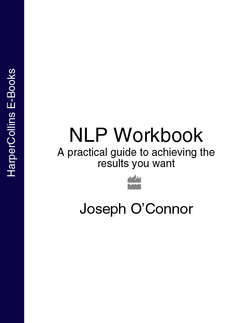Читать книгу NLP Workbook: A practical guide to achieving the results you want - Joseph O’Connor - Страница 14
Worthiness
ОглавлениеDo you deserve to achieve your goals?
Only you can answer this question, but why not?
NLP does not judge whether goals are morally or ethically right, it simply gives you a process to help you achieve them. The ecology check will usually catch any moral or ethical dilemmas. Only you can decide how to resolve these dilemmas.
After you have worked on your goals with the well-formed conditions, put them through the PAW questions. Say for each goal:
‘This goal is possible.’
‘I have the ability to achieve this goal.’
‘I deserve to achieve this goal.’
Notice any uncomfortable feelings. They will point to obstacles and self-doubts.
Now look for possible obstacles. What might stop you? Think to yourself, ‘I will not achieve my goal because . . .’ and then list all the possible reasons that come into your mind. These obstacles usually fall into five categories:
1 You don’t have the resources – people, equipment, time and place.
2 You have the resources, but you don’t know what to do.
3 You know what to do, but you do not believe you have the skill.
4 You have the skill, but it doesn’t seem worth it.
5 It is worthwhile, but somehow it’s ‘just not you’.
Once you have the list of objections, decide how many of them are real obstacles and how many of them are your beliefs.
There are three possibilities:
1 There are real obstacles that make it impossible for you to achieve your goals.
If this is so, then just drop the outcome. It’s a waste of time to pursue it now, although circumstances may change.
2 They are real obstacles that you could get around if you devoted the time and effort to doing so.
The keys to achievement
If this is so, then decide whether you want the goal enough to put in the time and effort. If you do, fine. If you do not, then drop the outcome.
3 They are beliefs about yourself or other people and you do not really know whether they are true.
If this is so, then think how you could test that belief. Does the obstacle only exist inside your head? How real is it? Once you have tested it, then it will fall into one of the first two categories.
This approach makes you responsible for your outcomes. You decide.
